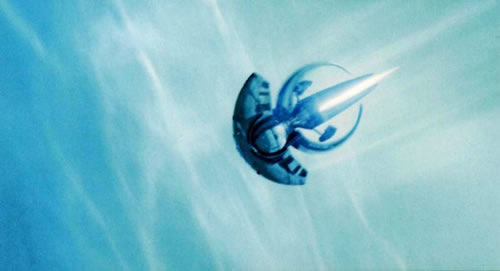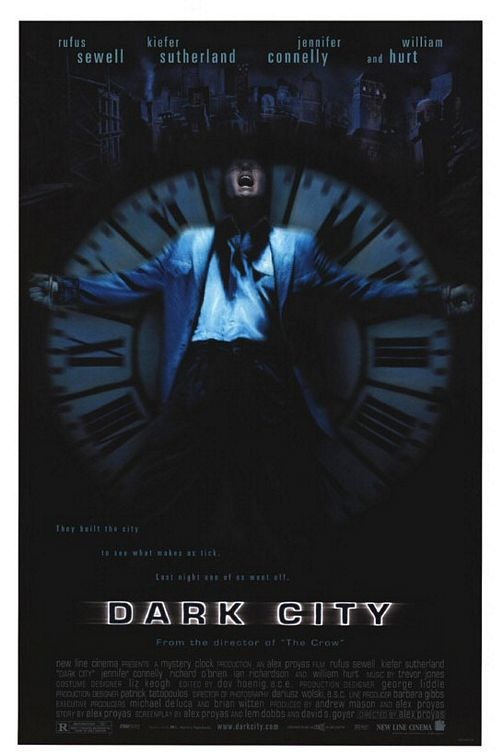Making Star Trek Possible: Practical Time Travel
Posted by Andrew on May 6th, 2009A five-part series that tries to explain how to make the science of Star Trek real…
Time Travel stories generally suck. There are some noteworthy exceptions – specifically stories that deal with the problems of time travel and not just time travel as a plot device (Primer, Back to the Future, to name a few).

Star Trek has done some great and some very bad time travel stories. Story merits aside, there’s one big problem with most time travel stories; Transmitting people back in time (information) has no theoretical basis: It’s impossible. For every worm hole propped open with exotic matter or giant Tippler tube, someone always finds an equation to show how the universe corrects itself with quantum screams, bubbles or other annoyances that get in the way of us correcting that horrible thing that happened in 6th grade or saving the whales.
Assuming for a moment that the killjoys at MIT and Princeton who relish in pointing out that time travel as we understand it is impossible, then what? How can we tell scientifically literate time travel stories?
Fake universe
If the universe is really just a computer program and we’re just AI running around in as described in countless sci-fi stories, the Matrix and a few Star Trek episodes; then anything is possible. Traveling back in time is like finding a cheat code on a video game that lets you hop around levels in a game. Real time travel is still impossible but time travel for people in the simulation is totally possible. What are the odds that we’re in a quantum computer simulation? Frightenly good according to the Harter equation (see footnote).
Sideways time travel
If we’re not all in a computer simulation, then maybe the way to go back in time is to go sideways into a parallel universe that’s a mirror of our own but just a few milliseconds behind us and keep going universe to universe until you get to the time you want. Assuming that the multi-worlds theory of Quantum Mechanics is correct and that our universe branches off every time there’s a quantum event, then there could be an infinite number of universes like our own progressing back to the big bang because some of them got a little later start then us. Of course this isn’t time travel into our own timeline. But it’s traveling into a past similar to our own. You can kill all you distant relatives without repercussions (besides trifling moral ones).
Change the present to the past
The beautiful premise in Alex Proyas’s film Dark City was that the clock could be rolled back and timelines altered by simply putting people to sleep and then moving things where you wanted and implanting memories. No time machine required. Just rewrite the calendar and get everyone to subscribe to a collective delusion and create physical evidence.

Sound crazy? Our whole calendar is based upon a bunch of guys in funny robes changing our timeline to agree to a religious point of view. We’re a couple weeks out of sync with natural history because of this! Totalitarian regimes in Soviet Russia, China and North Korea constantly changed their timelines to whatever was politically convenient.
Take this a step further and imagine some kind of technology that doesn’t so much allow you to travel back in time, as much as roll-back the odometer on everything else around you. This would require knowing where things go and repositioning atoms into a prior arrangement to precisely fit the period you wanted to go. It’d be a tremendous undertaking, but it’s an engineering problem and not one of fundamental physics. This may or may not have been the device that saved the day in Galaxy Quest.
Going even further out on the fringe, if every particle has a memory, maybe there’s a way to knock everything into a past state. This might be something that can just be done locally or on a planetary scale. Figuring out how to account for all the particles that fell out of the region could be complicated. Your atoms were doing other things before they became you…
Simulate just the parts you want
We already do this to an extent. Video games, movies and Renaissance fairs are all attempts to recreate a part of the past. They’re all getting more and more sophisticated. At some point you’ll be able to walk the streets of ancient Rome in some way or another and it will be just as real to your senses as having been there. While this won’t let you wreak havoc on the present, it can allow you to fulfill your suppressed power fantasies by allowing you to use your 21st century knowledge to try to take over the ancient world, acquire a harem and build monuments in your own honor. And isn’t that what this is all really about?
Check out the rest of the series on making the science of Star Trek possible
Footnote:
The Harter Equation: *If* it’s possible to make a quantum computer that can describe a reality equal to or greater than our own universe in detail, and *if* it’s possible to create an infinite number of simulated universes with this level of detail, the chance that our universe is actually a quantum simulation would be nearly infinite*. There would be infinitely more artificial universes (that think they’re real) than real ones. Now if an artificial universes (like our own?) can create other artificial universes, the chances that we’re an original universe becomes even more implausible.
August 6th, 2009 at 6:38 pm
Time travel, hmmm, still a dream that will really remain a dream.
August 6th, 2009 at 11:38 pm
Time travel, hmmm, still a dream that will really remain a dream.